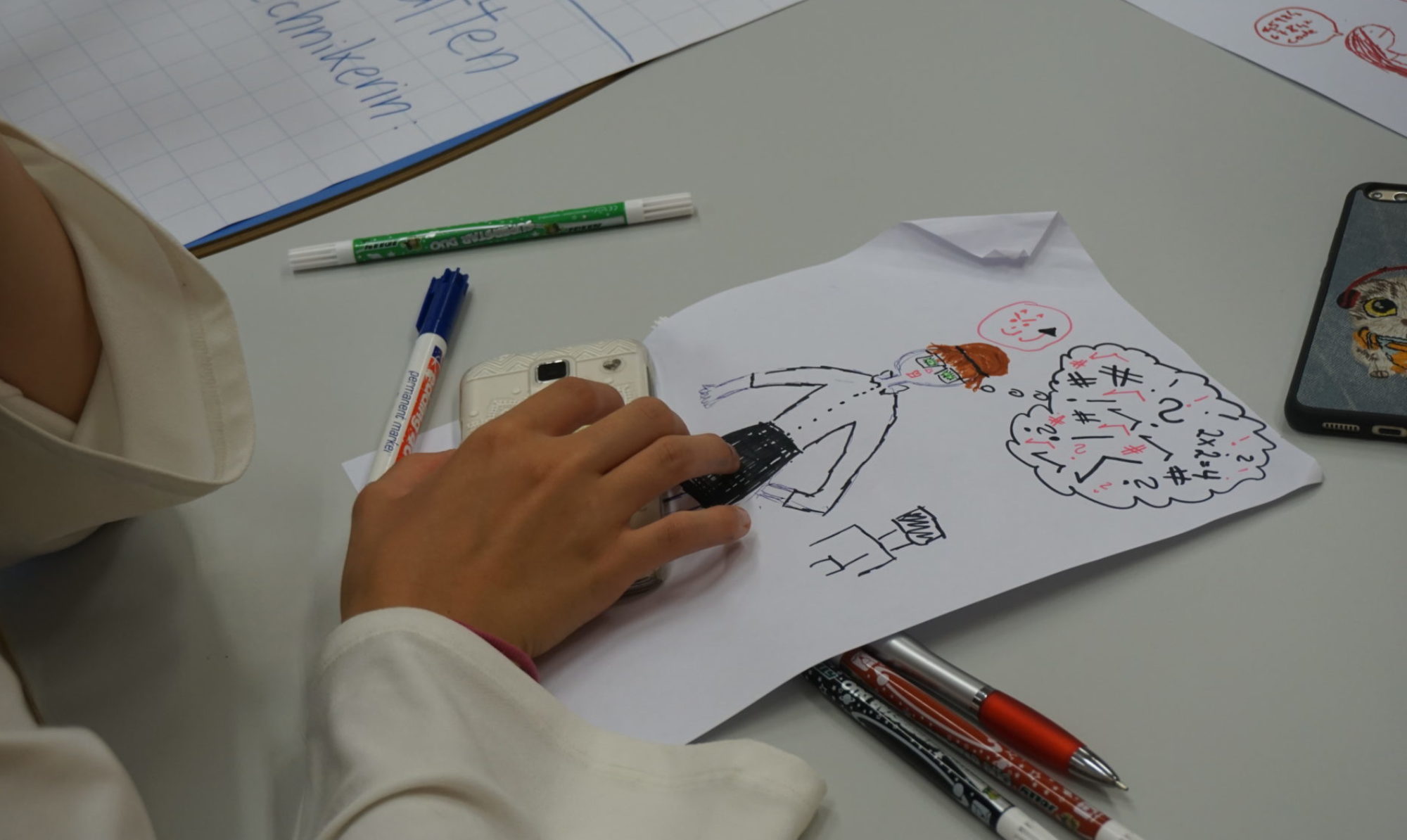How to cite: Spieler, B., & Schifferle, T. M. (2024). Making at School: Experiences from the Design-Based Research Project. In Proceedings of Constructionism & FabLearn 2023 (p. 338). Carnegie Mellon University. 10.57862/jfps-mb68
Continue reading “Making at School: Experiences from the Design-Based Research Project”[German] Von Algorithmen zu Öko-Innovationen: Computational Thinking, Entrepreneurship, Green Skills
How to cite: Kandlhofer, M., Spieler, B., & Burgsteiner, H. (2024). Von Algorithmen zu Öko-Innovationen: Computational Thinking, Entrepreneurship, Green Skills. In Gesellschaft für Informatik e.V. (GI) (Hrsg.), Jahresbericht 2024 (S. 54).
Link: https://gi.de/fileadmin/GI/Hauptseite/Service/Publikationen/Jahresbericht2024_220824.pdf
Continue reading “[German] Von Algorithmen zu Öko-Innovationen: Computational Thinking, Entrepreneurship, Green Skills”Designing, Coding and Embroidering
A Workflow for Gender-Sensitive and Interdisciplinary Teaching
How to cite: Spieler, B., Gursch, S., Krnjic, V., Horneck, K., & Slany, W. (2024). Designing, Coding and Embroidering: A Workflow for Gender-Sensitive and Interdisciplinary Teaching. International Journal of Emerging Technologies in Learning (iJET), 19(06), pp. 79–104. https://doi.org/10.3991/ijet.v19i06.48591
Continue reading “Designing, Coding and Embroidering”[German] Vergleich der Informatikausbildung für angehende Primar- und Sekundarlehrpersonen an Deutsch-schweizer Pädagogischen Hochschulen.
Zitierhinweis: Meyer-Baron, Larissa, Adrian Degonda, Bernadette Spieler u. Thomas Schmalfeldt. 2024. Vergleich der Informatikausbildung für angehende Primar- und Sekundarlehrpersonen an Deutsch-schweizer Pädagogischen Hochschulen. Zürich: Pädagogische Hochschule Zürich. https://doi.org/10.5281/zenodo.11468166
Continue reading “[German] Vergleich der Informatikausbildung für angehende Primar- und Sekundarlehrpersonen an Deutsch-schweizer Pädagogischen Hochschulen.”[German] Fokus auf Lösungsstrategien
Zitierhinweis: Bernadette Spieler (2024) Fokus auf Lösungsstrategien. In: Wirksamer Informatikunterricht. Hrsg. von Dennis Komm. Schneider Verlag Hohengehren, 2024, SBN: 978-3-8340-2243-1.
Link: https://paedagogik.de/alle-anzeigen-fachdidaktik/product/wirksamer-informatikunterricht-4011/
[German] ‹Making im Unterricht›Erfahrungen von Lehrpersonen aus dem Design-Based-Research-Projekt
Zitationshinweis: Spieler, Bernadette, Tobias M. Schifferle, und Manuela Dahinden. 2024. „‹Making Im Unterricht›: Erfahrungen Von Lehrpersonen Aus Dem Design-Based-Research-Projekt“. MedienPädagogik: Zeitschrift für Theorie Und Praxis Der Medienbildung 56 (Making & more):331-63. https://doi.org/10.21240/mpaed/56/2024.02.14.X.
Continue reading “[German] ‹Making im Unterricht›Erfahrungen von Lehrpersonen aus dem Design-Based-Research-Projekt”[German] Empfehlungen für gendersensible MINT-Angebote für Schülerinnen am Beispiel der Schweiz
Zitationshinweis: Spieler, B. (2023). Empfehlungen für gendersensible MINT-Angebote für Schülerinnen am Beispiel der Schweiz. In: Jeanrenaud, Y. (eds) Teaching Gender in MINT in der Pandemie. Edition Fachdidaktiken. Springer VS, Wiesbaden. https://doi.org/10.1007/978-3-658-43375-8_5
Continue reading “[German] Empfehlungen für gendersensible MINT-Angebote für Schülerinnen am Beispiel der Schweiz”[German] „BioTinkering – Biologie Als Faszinierendes Making-Thema in Den Naturwissenschaften: Überlegungen Zur Konzeption Und Durchführung Von BioTinkering-Aktivitäten“
Zitationshinweis: Furrer, F., Schläpfer-Miller, J., Spieler, B. und Dahinden, M. (2023). „BioTinkering – Biologie Als Faszinierendes Making-Thema in Den Naturwissenschaften: Überlegungen Zur Konzeption Und Durchführung Von BioTinkering-Aktivitäten“. MedienPädagogik: Zeitschrift für Theorie Und Praxis Der Medienbildung 56 (Making & more):69-97. https://doi.org/10.21240/mpaed/56/2023.12.03.X.
Continue reading “[German] „BioTinkering – Biologie Als Faszinierendes Making-Thema in Den Naturwissenschaften: Überlegungen Zur Konzeption Und Durchführung Von BioTinkering-Aktivitäten“”[German] Empfehlungen für gendersensible MINT-Angebote (WhitePaper)
Zitationshinweis: B. Spieler (2023) Empfehlungen für gendersensible MINT-Angebote. digitalswitzerland. (WhitePaper), Veröffentlicht am: 23.01.2023 Link: https://digitalswitzerland.com/de/empfehlungen-fuer-gendersensible-mint-angebote/ |
Beliefs and Expectations of Primary Student Teachers in
Informatics
Reference Format: Bernadette Spieler, Tobias M. Schifferle, and Tobias Berner. 2022. Beliefs and Expectations of Primary Student Teachers in Informatics. In Proceedings of
the 17th Workshop in Primary and Secondary Computing Education (WiPSCE
’22), October 31-November 2, 2022, Morschach, Switzerland. ACM, New York,
NY, USA, 4 pages. https://doi.org/10.1145/3556787.3556868
Informatics”
